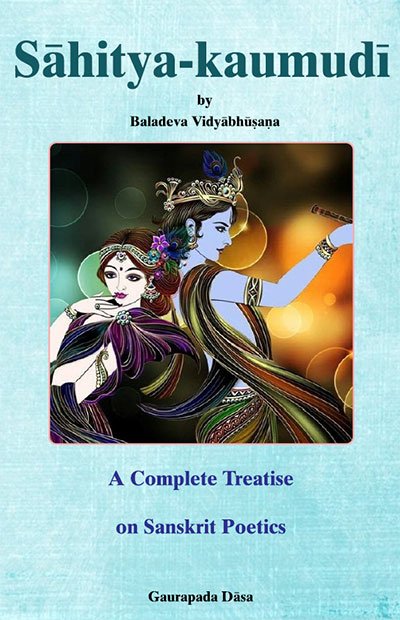Sahitya-kaumudi by Baladeva Vidyabhushana
by Gaurapada Dāsa | 2015 | 234,703 words
Baladeva Vidyabhusana’s Sahitya-kaumudi covers all aspects of poetical theory except the topic of dramaturgy. All the definitions of poetical concepts are taken from Mammata’s Kavya-prakasha, the most authoritative work on Sanskrit poetical rhetoric. Baladeva Vidyabhushana added the eleventh chapter, where he expounds additional ornaments from Visv...
Text 10.59 [Apahnuti]
7. Apahnuti
प्रकृतं यन् निषिध्यान्यत् स्थाप्यते सा त्व् अपह्नुतिः ॥ १०.९६ab ॥
prakṛtaṃ yan niṣidhyānyat sthāpyate sā tv apahnutiḥ || 10.96ab ||
prakṛtam—the subject of description (the upameya); yat—which [other]; niṣidhya—by negating; anyat—the other (the upamāna); sthāpyate—is established; sā—that; tu—only; apahnutiḥ—the ornament called apahnuti (concealment).
Apahnuti (poetic denial) is the establishment of the upamāna by negating the subject of description (the upameya).
upameyam asatyaṃ kṛtvopamāne satyatayā sthāpite’pahnutiḥ.
When the upameya is made to be nonexistent and the upamāna is established as existing, that is apahnuti.
